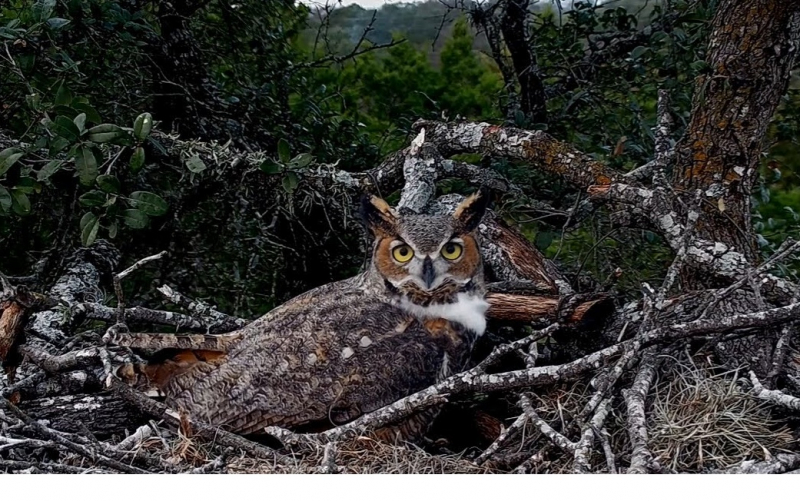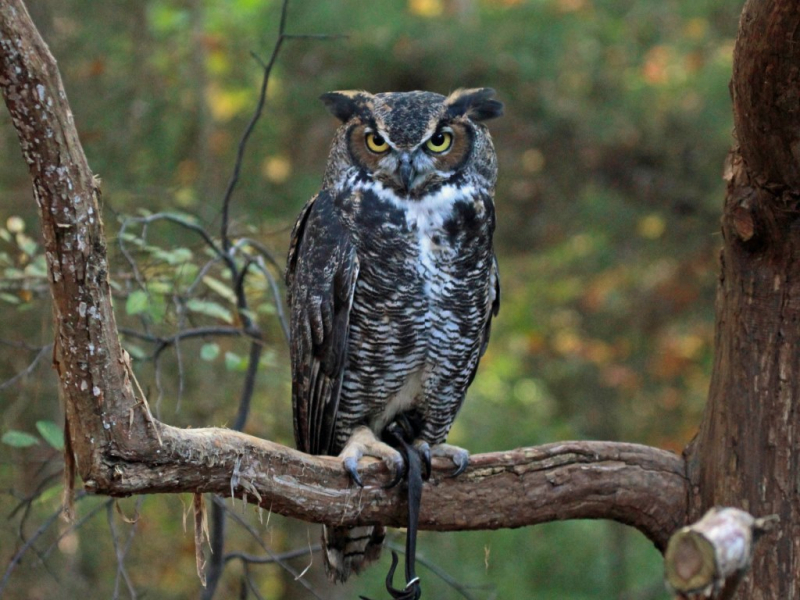The great horned owl
The great horned owl (Bubo virginianus), also known as the tiger owl (originally derived from early naturalists' description as the "winged tiger" or "tiger of the air"), or the hoot owl, is a large owl native to the Americas. It is an extremely adaptable bird with a vast range and is the most widely distributed true owl in the Americas. Its primary diet is rabbits and hares, rats and mice, and voles, although it freely hunts any animal it can overtake, including rodents and other small mammals, larger mid-sized mammals, birds, reptiles, amphibians, and invertebrates. In the ornithological study, the great horned owl is often compared to the Eurasian eagle-owl (Bubo bubo), a closely related species, which despite the latter's notably larger size, occupies the same ecological niche in Eurasia, and the red-tailed hawk (Buteo jamaicensis), with which it often shares similar habitat, prey, and nesting habits by day thus is something of a diurnal ecological equivalent. The great horned owl is one of the earliest nesting birds in North America, often laying eggs weeks or even months before other raptorial birds.
In most aspects of their behavior, great-horned owls are typical of owls and most birds of prey. From experimentally raising young owls in captivity, Paul L. Errington felt that they were a bird of "essentially low intelligence" who could only hunt when partially wild and instinctually driven by hunger to hunt whatever they first encounter. Like most owls, the great horned owl makes great use of secrecy and stealth. Great Horned Owls are a big concern with juvenile raccoons. Baby and teenage raccoons that wander too far from the den can fall prey to horned owls, who mostly hunt at night. Some adult raccoons will find themselves in a fight with a horned owl when they try to steal eggs from its nest.
Due to its natural-colored plumage, it is well camouflaged both while active at night and while roosting during the day. During the daytime, it roosts usually in large trees (including snags & large hollows but usually thick branches) but may occasionally be in crevices or small caves in rocks or in dense shrubbery. Pine and other coniferous trees may be preferred where available since they are particularly dense and provide cover throughout the year. Typically, males have a favorite roosting site not far from the nest, sometimes used over successive years.














